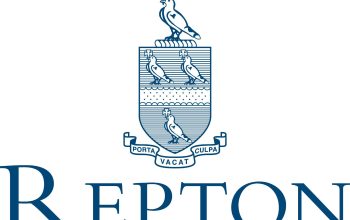Spanish, with its rich history, diverse culture, and widespread global influence, stands as one of the most spoken languages in the world. With over 580 million speakers worldwide, mastering Spanish opens doors to a plethora of opportunities in academics, career advancement, and cultural enrichment. Every year, millions of individuals embark on the journey of learning Spanish, recognizing its significance in today’s interconnected world.
However, the path to proficiency in a new language is often challenging, requiring dedication, time, and effective learning strategies. On average, it takes around 600-750 hours of study to achieve basic fluency in a language—a daunting prospect for many language learners. Yet, amidst this challenge lies an effective approach that has proven to accelerate language acquisition: immersive learning.
In recent years, immersive language programs have gained prominence as one of the most effective ways to learn a foreign language. A spanish immersion course offers students an unparalleled opportunity to immerse themselves in the language, culture, and daily life of a Spanish-speaking country like Spain. By surrounding oneself with native speakers and engaging in authentic interactions, immersion programs provide a dynamic and effective environment for language acquisition.
Real-life language practice
Every bilingual person knows that mastering a new language requires more than just memorizing vocabulary and grammar rules. It demands real-life practice in authentic contexts. Immersive language programs shine in this regard, offering learners the invaluable opportunity to apply their language skills in everyday situations.
Tailored programs such as the Group Custom Programs offered by International House Madrid not only focus on classroom instruction but also emphasize immersive experiences that allow participants to engage with Spanish language and culture firsthand. By offering a comprehensive package that includes student accommodation with host families or in residences, airport transfers, cultural immersion activities, and excursions to landmarks, International House Madrid ensures that learners are fully immersed in the Spanish language from day one.
But why is real-life practice so crucial for language acquisition? Immersion programs provide learners with constant exposure to the target language, forcing them to actively use and adapt their language skills in various situations. Whether ordering food at a local café, navigating public transportation, or conversing with native speakers, every interaction becomes a valuable learning opportunity. This practical application of language skills reinforces vocabulary, grammar, and pronunciation, leading to faster and more effective language acquisition.
Moreover, immersion programs offer a level of cultural authenticity that cannot be replicated in a classroom setting. By immersing themselves in the daily life and customs of a Spanish-speaking community, learners gain insights into cultural nuances, idiomatic expressions, and social norms—essential components of language proficiency that go beyond textbook learning.
Benefits of immersive learning
Consistent exposure is crucial for learning a new language. Immersive learning is a highly effective method for language acquisition, offering numerous benefits that contribute to rapid progress and a deep understanding of the target language. In this article, we will explore some of these advantages and how immersive learning fosters language proficiency.
- Increased Motivation: Real-life practice in authentic contexts ignites a sense of purpose and relevance, as learners witness the immediate impact of their language skills in everyday situations. Whether successfully navigating a conversation with a native speaker or confidently ordering a meal in Spanish, each accomplishment reinforces motivation and encourages continued learning.
- Enhanced Listening Comprehension: Immersive learning exposes learners to a wide range of accents, speech patterns, and colloquial expressions, thereby sharpening listening comprehension skills. Through constant exposure to spoken Spanish in diverse contexts, learners become adept at understanding and interpreting verbal cues, contributing to overall language proficiency. For example, participating in group discussions, attending cultural events, and conversing with locals all contribute to improved listening comprehension.
- Development of Fluency: Constant practice encourages learners to think and express themselves in Spanish without the hindrance of translation. Over time, this immersion leads to smoother, more natural language production, as learners gain confidence in their ability to convey thoughts and ideas effectively.
- Cultural Understanding: Immersive learning goes beyond language acquisition—it offers participants a deeper understanding of the cultural context in which the language is spoken. By engaging with native speakers and participating in cultural activities, learners gain insights into Spanish customs, traditions, and way of life. This cultural immersion not only enhances language learning but also fosters intercultural competence and empathy.
- Research Supports Immersive Learning: Numerous studies have highlighted the effectiveness of immersive language learning in facilitating language acquisition. For instance, a study conducted by the University of Minnesota found that students who participated in immersive language programs demonstrated significantly greater gains in language proficiency compared to those in traditional classroom settings. This research underscores the transformative impact of immersive learning on language acquisition and underscores its value as a powerful tool for learning Spanish.
Humans are social and need the community around us to survive. Immersive learning takes advantage of this need to reinforce the learning of the new language, making the learner feel the need to communicate in the new environment, acquiring the experiences and therefore the vocabulary of native speakers. Thanks to group courses such as those offered by International House Madrid, it is now possible to choose options that suit the needs of the group of students, enriching the learning experience.




